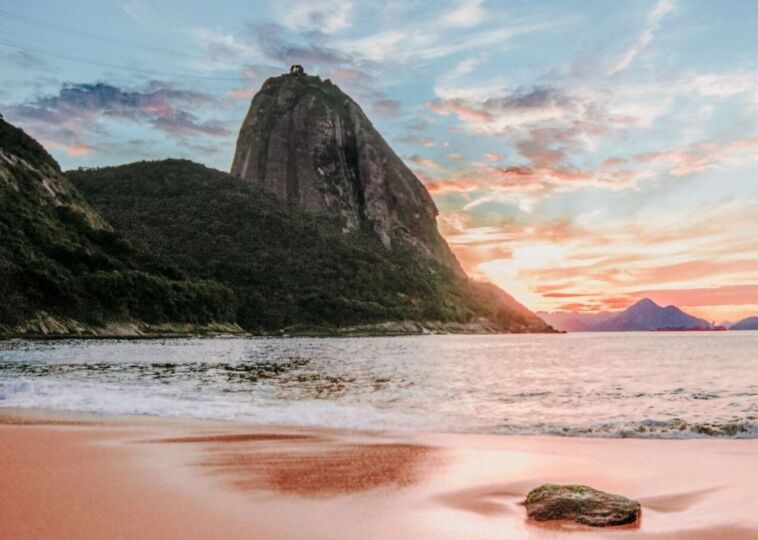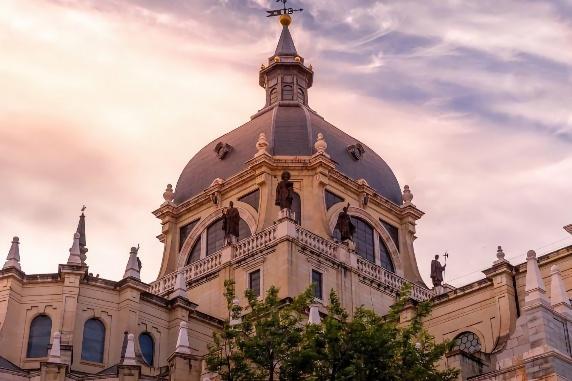Unveiling Brazil’s Natural Wonders: A Journey Through Awesome Landscapes

Contents [hide]
As the largest country in South America, it’s a treasure trove of varied landscapes, each more mesmerizing than the last.
Pantanal: the World’s Largest Wetlands

Nestled along Brazil’s western frontier, the Pantanal reigns supreme as the most significant wetlands on Earth. Picture a boundless expanse where shimmering waters and sprawling marshes create a dazzling mosaic of life. This vast, dynamic ecosystem is a stage for nature’s most captivating performances. In the Pantanal, every visit feels like stepping into a living, breathing wildlife documentary.
Capybaras, the world’s most giant rodents, wade gracefully through the wetlands, their social groups often forming an endearing sight. But the Pantanal is more than just a collection of beautiful sights. It’s a sanctuary where nature’s drama unfolds with awe-inspiring grandeur.
The wetlands shift with the seasons, transforming from a waterlogged paradise to a network of dry patches and lush vegetation. This ebb and flow creates a dynamic habitat that supports an astonishing variety of flora and fauna. Every visit to the Pantanal is an adventure, with each turn offering discoveries and breathtaking encounters.
Cerrado: the Tropical Savanna

Venturing into Brazil’s central region reveals a captivating and essential landscape: the Cerrado. This expansive tropical savanna is a tapestry of sweeping grasslands and scattered trees, creating a unique and picturesque scenery. It’s like stepping into a living, breathing painting where every horizon stretches endlessly, punctuated by resilient flora and bursts of color.
The Cerrado isn’t just about its striking beauty; it’s a dynamic ecosystem teeming with life. The region boasts an impressive array of biodiversity, with species specially adapted to thrive in its environment.
From the hardy plants that have evolved to survive its dry seasons to the vibrant flowers that add splashes of color against the backdrop of open fields, the Cerrado is a testament to nature’s ingenuity. This savanna plays a crucial role in Brazil’s ecological balance.
Caatinga: the Desert’s Mystique

Nestled in northeastern Brazil, the Caatinga is a semi-arid desert that starkly contrasts the lush landscapes in the country. Despite these challenging conditions, the Caatinga is brimming with life, thanks to the extraordinary adaptations of its flora and fauna. The vegetation in the Caatinga is an incredible showcase of survival strategies.
Plants here have evolved to endure long dry periods, with many species featuring deep root systems that reach underground water sources. The Sictyocaulon plant is another adaptation marvel, thriving in the dry heat and often covered with a protective layer of wax to reduce water loss. The animal life in the Caatinga is equally fascinating.
The Caatinga horned frog, for example, can burrow into the ground to escape the intense heat. At the same time, the armadillo and fox have adapted to finding food and water sources with remarkable efficiency. Some animals, like the dromedary and spiny rat, can go for extended periods without drinking water, relying on the moisture in their food.
Atlantic Rainforests: A Verdant Haven

Head southeast in Brazil, and you’ll step into the lush embrace of the Atlantic Rainforests, a true tropical paradise that wraps around the Brazilian coastline like a verdant shawl. These rainforests are not just visually stunning; they are a vibrant ecosystem brimming with life and crucial to our planet’s well-being.
This is the Atlantic Rainforest, a living tapestry of green that supports an astonishing diversity of species. From towering mahogany trees to vibrant orchids clinging to the trunks, the flora here is nothing short of spectacular. The Atlantic Rainforest’s rich biodiversity provides vital habitats for creatures such as the endangered golden lancehead pit viper and the elusive jaguar.
The importance of the Atlantic Rainforests extends far beyond their beauty. Additionally, the rainforests contribute to the water cycle by influencing rainfall and maintaining river systems. Despite their significance, the Atlantic Rainforests are under threat from deforestation and urbanization. We can help preserve the Atlantic Rainforests for future generations by supporting sustainable practices and protecting these green spaces.
Araucaria Pine Forests: Southern Elegance

Nestled in the southern reaches of Brazil, the Araucaria Pine Forests stand as a testament to the country’s diverse natural splendor. Unlike the tropical rainforests or the arid deserts of Brazil, these pine forests offer a different kind of charm, one that is serene, majestic, and uniquely captivating.
The Araucaria Pine Forests are dominated by the iconic Araucaria trees, also known as the Paraná pines. Beyond their visual appeal, the Araucaria Pine Forests are a tranquil haven for those seeking solace in nature.
Whether you’re taking a leisurely walk or simply sitting quietly, the peace and calm of these forests provide a welcome escape from the hustle and bustle of everyday life. Despite their relatively cooler, temperate climate compared to other parts of Brazil, the Araucaria Pine Forests are home to a rich tapestry of wildlife.
Amazon Rainforest: the Heart of Brazil’s Natural Riches

When you think of Brazil, the Amazon Rainforest is likely the first image that springs to mind. Covering more than 40% of Brazil’s land area, the Amazon is a living, breathing testament to the planet’s natural splendor and complexity. The Amazon Rainforest is nothing short of a natural masterpiece.
From the elusive jaguar and the colorful macaw to the tiny, bioluminescent fungi, the Amazon is a haven for countless creatures, many of which are found nowhere else on Earth. Beyond its breathtaking beauty, the Amazon is critical to the global ecosystem.
Often referred to as the lungs of the Earth, the rainforest produces approximately 20% of the world’s oxygen, making it essential for sustaining life. The health of the Amazon is intricately linked to the stability of the Earth’s climate, and its preservation is vital for future generations. The Amazon is also a treasure trove of medicinal potential.
Fernando De Noronha: Brazil’s Stunning Archipelago Paradise

Nestled in the Atlantic Ocean, about 350 kilometers off Brazil’s northeastern coast, Fernando de Noronha is a jewel of a national park renowned for its breathtaking natural beauty. The archipelago’s crown jewel is Vila dos Remédios, the largest and only inhabited island.
This charming locale serves as the gateway to Fernando de Noronha’s pristine landscapes and is where visitors base themselves during their stay. With its quaint vibe and picturesque views, Vila dos Remédios offers a unique blend of relaxation and adventure. One of the special features of Fernando de Noronha is its controlled access.
Fernando de Noronha is renowned for its pristine beaches, crystal-clear waters, and vibrant marine life. While the beaches are a significant draw, Fernando de Noronha offers more than just sun and sea. Whether trekking through verdant trails or simply soaking in the natural beauty, every corner of Fernando de Noronha feels like a slice of paradise.


